If you adore orchids, you'd agree that these elegant beauties demand more tender, loving care to flourish.
However, much like any other green companion in our gardens, orchids have their share of unwanted guests - the pesky pests and those silent killer diseases that could swoop in and cause havoc in no time.
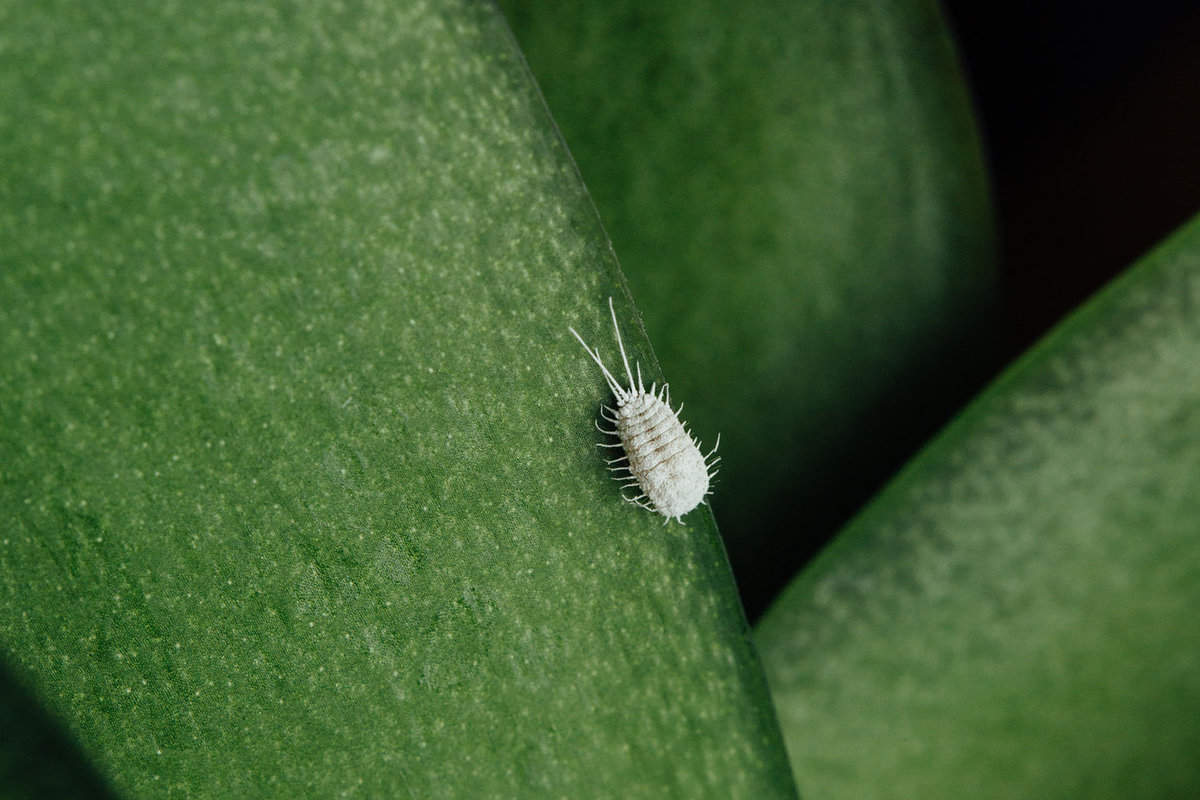
One day, your orchid is blooming and smiling at the sun, and the next, it's under siege by these tiny invaders.
That's why it's essential to have a solid understanding of orchid pest and disease control to keep your plants healthy and beautiful.
The most common orchid pests include mealybugs, mites, and aphids. These can quickly multiply and spread throughout your plant, causing damage to the leaves, stems, and flowers.
In addition to pests, orchids can also be affected by various diseases, such as leaf spot, root rot, and fungal infections. These issues can lead to stunted growth, wilting, and even plant death if left untreated!
Knowing Your Orchids
Orchids are beautiful and exotic plants that require special care to thrive. They are known for their vibrant colors, unique shapes, and delicate blooms.
Orchids grow naturally in tropical and subtropical regions, requiring specific conditions to grow successfully.
Orchids are epiphytes, which means they grow on trees or other plants rather than in soil. They absorb nutrients and moisture from the air and surrounding environment.
Orchids have specialized roots adapted to cling to tree bark and other surfaces. These roots are covered in a spongy tissue called velamen, which helps them absorb moisture and nutrients.
Understanding the specific needs of your orchid is crucial to its health and growth. There are many different types of orchids, each with unique requirements.
Some orchids prefer cooler temperatures, while others thrive in warmer environments. Some require more water than others, and some need special fertilizers.
Curious about your Orchid's blooming journey? Explore when will your orchid buds bloom!
Common Orchid Pests
When it comes to orchid pests, there are a few common culprits that you should keep an eye out for.
Aphids
Aphids are small, soft-bodied insects that are usually green or black. They are often found on the undersides of leaves and can cause stunted growth, distorted leaves, and yellowing.
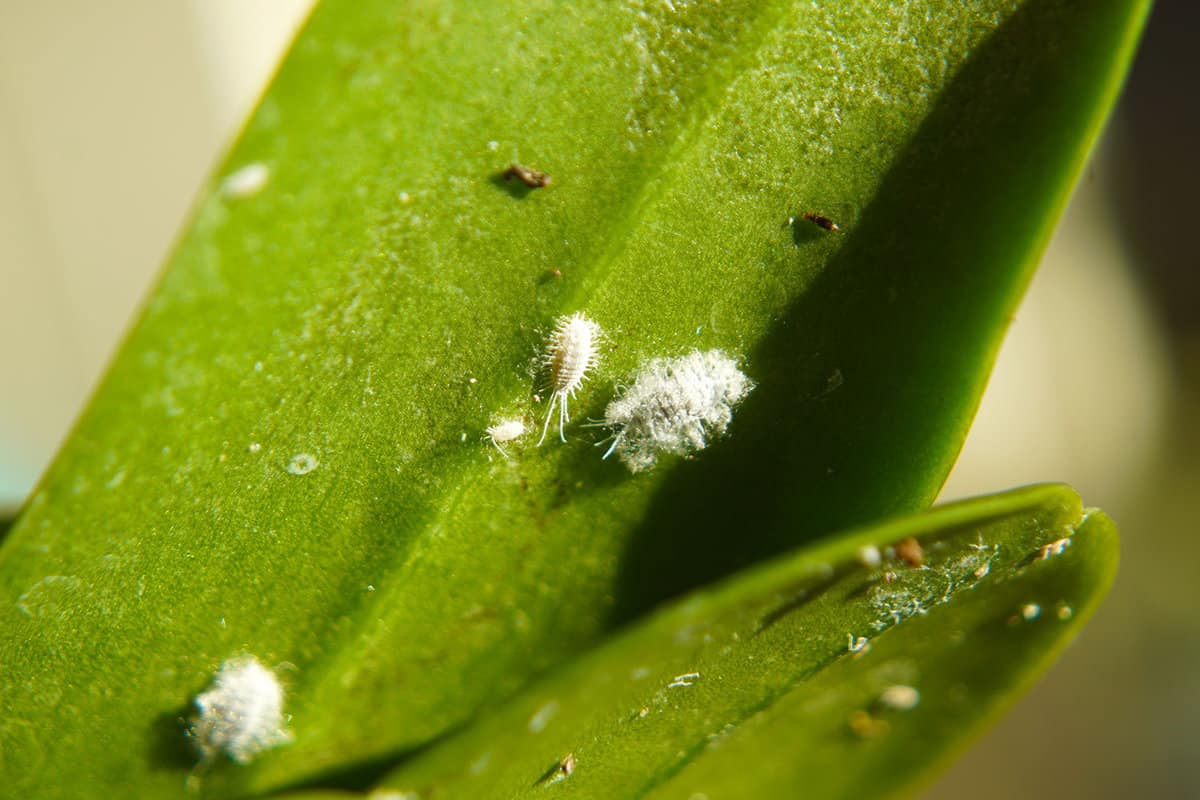
You can identify aphids by their pear-shaped bodies and the presence of honeydew, a sticky substance they secrete.
Mealybugs
Mealybugs are another common orchid pest that can cause damage to your plants. They are small, white, and fluffy-looking insects found on your orchids' leaves, stems, and flowers.
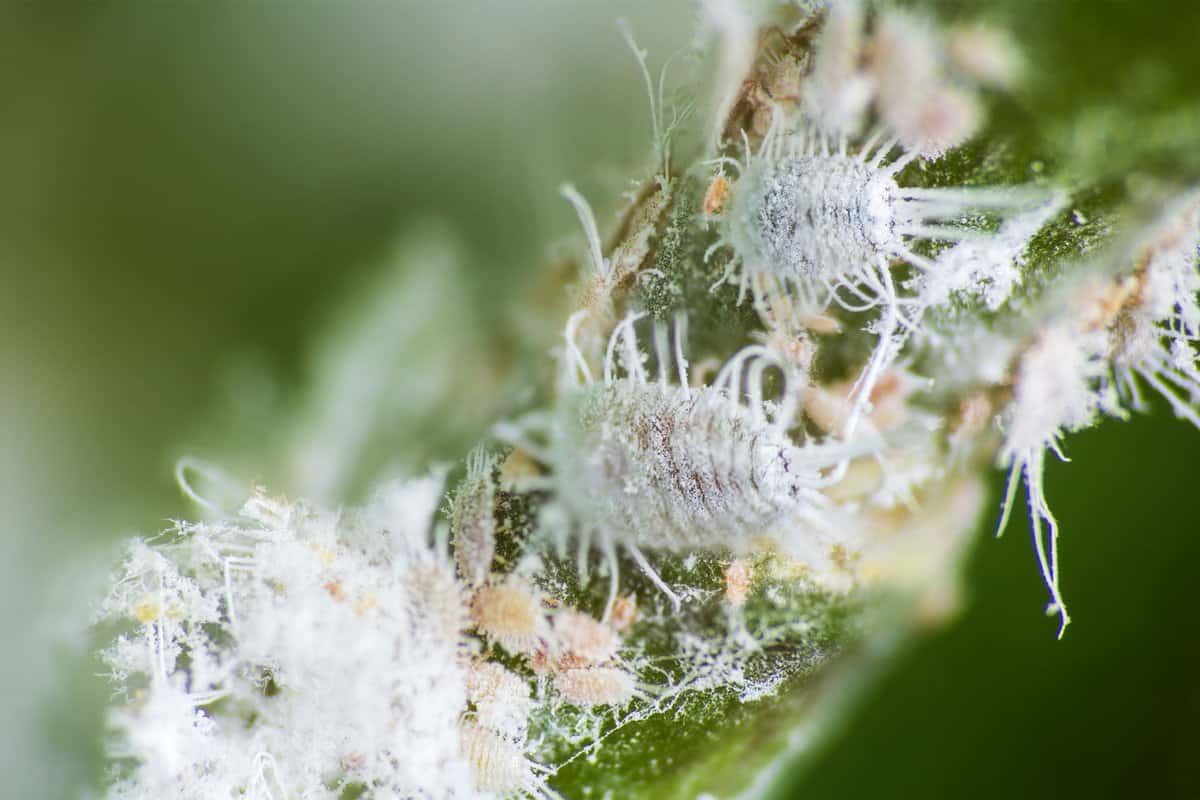
Mealybugs feed on the sap of your plants and can cause stunted growth, yellowing, and wilting. They have a cotton-like appearance and the presence of honeydew.
Spider Mites
Spider mites are tiny, spider-like insects that can be difficult to see with the naked eye. They are usually found on the undersides of leaves and can cause yellowing, stippling, and webbing.
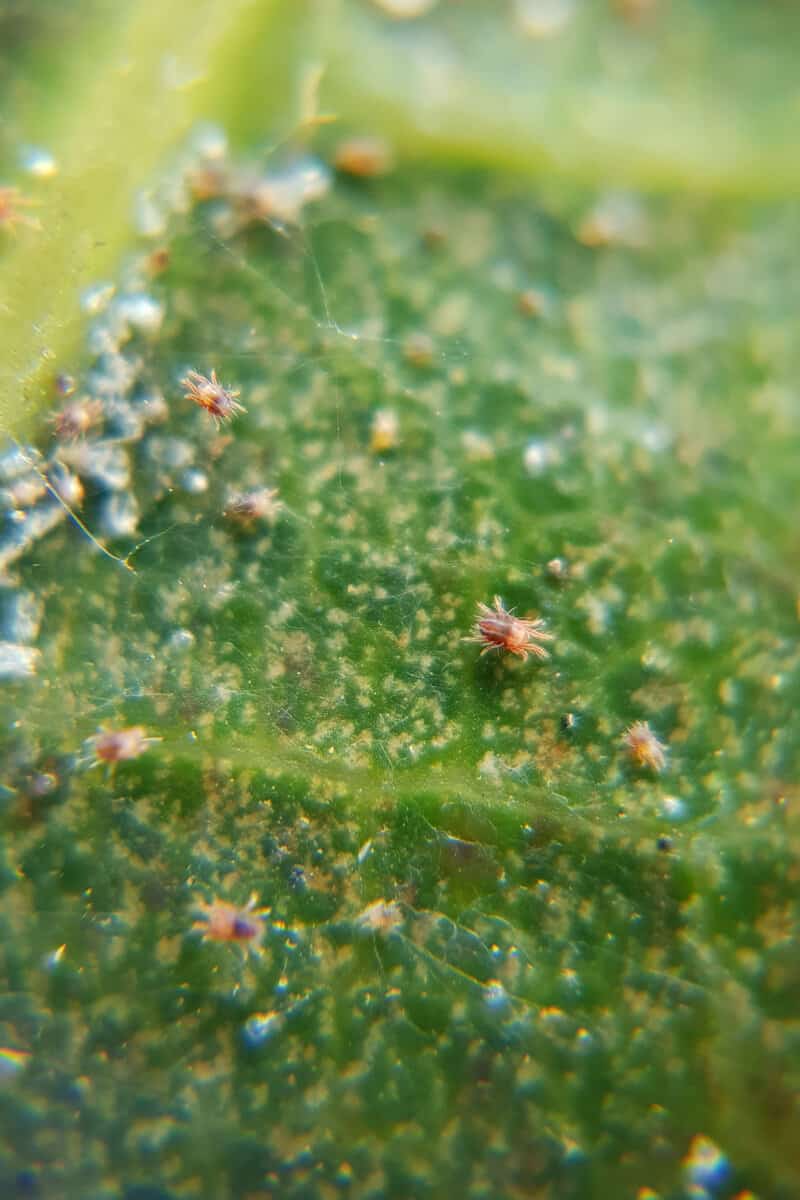
Spider mites have a webbing on your plants and the small, reddish-brown dots on the undersides of leaves.
Slugs and Snails
Slugs and snails are not insects, but they can still cause damage to your orchids. They are usually found on the ground around your plants and can climb up to feed on the leaves and flowers.
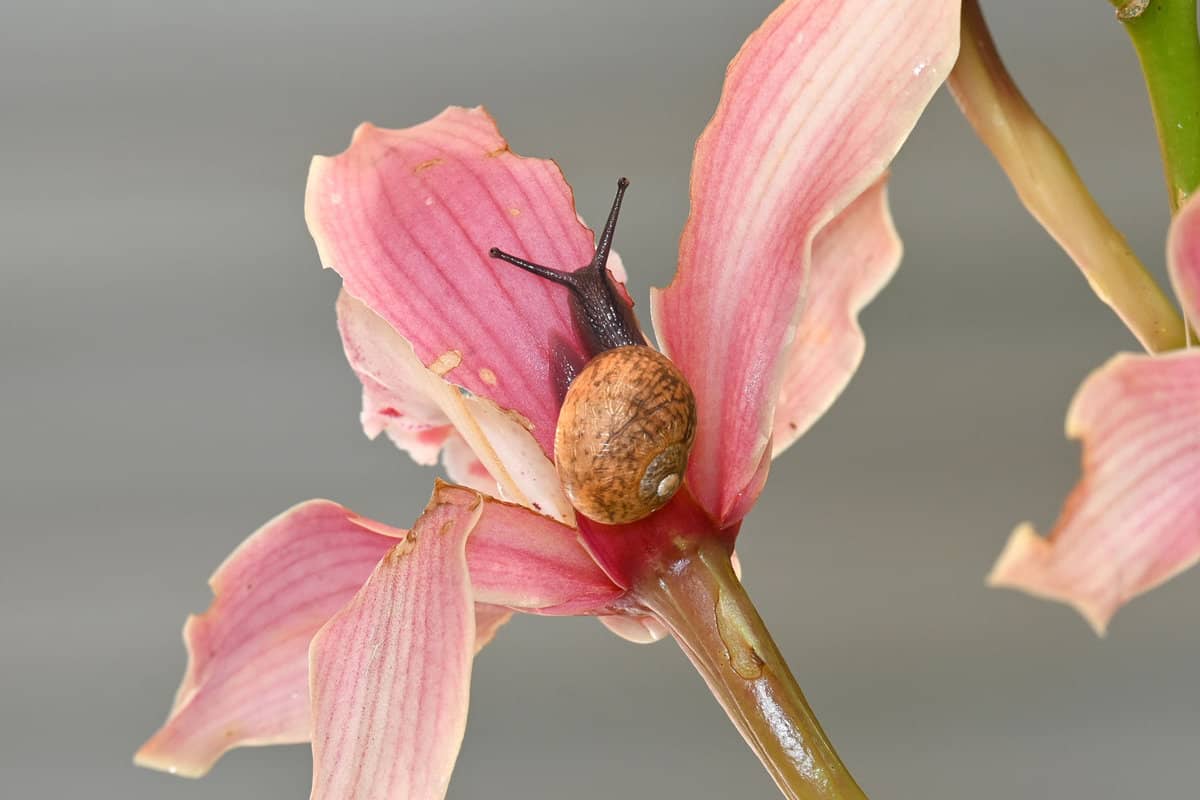
Slugs and snails can cause holes in your leaves and flowers, leaving a slimy trail behind. You can identify slugs and snails by their dirty bodies and the presence of their courses.
Common Orchid Diseases
Orchids are prone to various diseases affecting their growth and overall health. Here are some of the most common orchid diseases that you might encounter:
Fungal Diseases
Fungal diseases are one of the most common problems that orchid growers face. These diseases can cause leaf spots, root rot, and stem rot. Some common fungal diseases that affect orchids include:
- Anthracnose
- Botrytis
- Fusarium
- Pythium
- Rhizoctonia
Bacterial Diseases
Bacterial diseases are less common than fungal diseases but can still be a problem for orchids. Bacterial diseases can cause leaf spots, stem rot, and root rot. Some common bacterial diseases that affect orchids include:
- Erwinia
- Pseudomonas
- Xanthomonas
Viral Diseases
Viral diseases are rare in orchids but can be devastating when they occur. Viral diseases can cause mottled leaves, stunted growth, and distorted flowers. Some common viral diseases that affect orchids include:
- Cymbidium mosaic virus
- Odontoglossum ringspot virus
- Tobacco streak virus
Identifying orchid diseases can be challenging, but catching them early is essential to prevent further damage. Look for signs such as discoloration, wilting, and spots on leaves and flowers.
If you're unsure about the problem's cause, consult a professional orchid grower or horticulturist for advice.
Preventive Measures
Proper Watering
Overwatering is one of the most common causes of orchid problems. Ensure you water your orchids properly by allowing the potting mix to dry before watering again.
Avoid leaving standing water in the pot or saucer, as this can lead to root rot and other problems. Use a well-draining potting mix and a pot with good drainage to help prevent overwatering.
Adequate Lighting
Orchids need adequate light to grow and thrive. Ensure your orchids get the right amount of light for their specific type.
Too much light can cause leaf burn, while too little can prevent flowering and growth. Use a light meter or consult a professional to determine the right light for your orchids.
Proper Fertilization
Fertilizing your orchids properly can help prevent pests and diseases. Use a balanced, water-soluble fertilizer and follow the instructions carefully.
Over-fertilizing can lead to salt buildup in the potting mix, harming your orchids. Use a fertilizer specifically formulated for orchids to ensure the best results.
Regular Inspection
Regularly inspecting your orchids can help you catch problems early and prevent them from spreading. Check for signs of pests, such as mealybugs or spider mites, and treat them promptly.
Look for signs of disease, such as leaf spots or yellowing, and take action as needed. Regularly cleaning and sanitizing your tools can also help prevent the spread of pests and diseases.
Pest Control Treatment Methods
Regarding pest control for orchids, you can use three main methods: biological control, chemical control, and cultural control.
Each method has advantages and disadvantages, and the best approach will depend on the pest or disease you are dealing with.
Biological Control
Biological control involves using natural predators, parasites, or diseases to control pests.
Orchid growers often prefer this method because it is environmentally friendly and does not involve chemicals. Some examples of biological control methods include:
- Introducing beneficial insects like ladybugs, lacewings, and predatory mites to control pests like aphids and spider mites.
- Using nematodes to control soil-borne pests like fungus gnats and root mealybugs.
- Applying Bacillus thuringiensis (BT) to control caterpillars and other leaf-eating insects
Chemical Control
Chemical control involves using pesticides or insecticides to kill pests. This method is effective but can harm the environment and other beneficial insects.
When using chemical control methods, following the instructions carefully and using the appropriate protective gear is essential.
Some examples of chemical control methods include:
- Using insecticidal soap or neem oil controls soft-bodied insects like mealybugs and spider mites.
- Applying systemic insecticides like imidacloprid controls pests that feed on the plant sap.
- Using contact insecticides like pyrethrins to control flying insects like whiteflies and thrips.
Cultural Control
Cultural control involves changing the growing conditions of the orchid to make it less hospitable to pests. This method is often used with other control methods to prevent pests from returning.
- Avoiding overwatering and providing good drainage to prevent root rot and other soil-borne diseases.
- Keeping the orchid clean and free of dead leaves and other debris that can harbor pests and diseases.
- Quarantining new plants for a few weeks before introducing them to your collection to prevent the spread of pests and diseases.
Disease Control Treatment Methods
When it comes to orchid disease control, there are several methods available. Depending on the type of disease, you may need to use a combination of treatments to eliminate it effectively.
Fungicides
Fungal diseases can be treated with fungicides. These chemicals work by either killing the fungus or preventing it from growing. There are several types of fungicides available, including systemic and contact fungicides.
Systemic fungicides are absorbed into the plant and provide long-lasting protection, while contact fungicides only protect the parts of the plant they come into contact with.
When using fungicides, it's essential to follow the instructions carefully. Apply the fungicide evenly and thoroughly to ensure complete coverage.
Be aware that repeated use of the same fungicide can lead to resistance, so it's a good idea to rotate between different fungicides.
Bactericides
Bacterial diseases can be treated with bactericides. These chemicals work by killing the bacteria or preventing it from spreading. There are several types of bactericides available, including copper-based products and antibiotics.
When using bactericides, it's essential to follow the instructions carefully. Apply the bactericide evenly and thoroughly to ensure complete coverage.
Be aware that repeated use of the same bactericide can lead to resistance, so it's a good idea to rotate between different bactericides.
Virus Control
Unfortunately, there are no effective treatments for viral diseases in orchids. The best way to control viral diseases is to prevent them from spreading in the first place.
This can be done by maintaining good hygiene practices, such as sterilizing pruning tools between plants and washing your hands before handling plants.
If you suspect your orchid has a viral disease, it's important to isolate it from other plants to prevent it from spreading. Infected plants should be destroyed to prevent the virus from spreading to other plants.
Click here to learn more on Amazon.
Click here to learn more on Amazon.
Final Thoughts
Caring for orchids requires a bit of knowledge and effort, but it is worth it for their beauty and symbolism.
By following the tips outlined in this article, you can prevent and treat common pests and diseases that may harm your orchids.
Remember to keep your orchids in the right environment, water them properly, and inspect them regularly for any signs of trouble.
If you notice any pests or diseases, quickly prevent them from spreading to other plants.
Finally, don't be discouraged if your orchids experience setbacks or fail to bloom!


